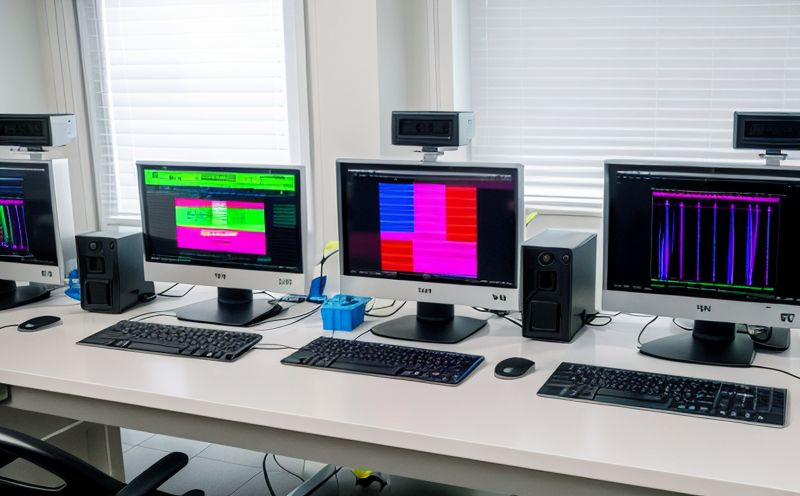AOAC 2016.05 Norovirus Genogroup I & II Detection in Food
The AOAC International Method 2016.05 is a standardized protocol used for the detection and quantification of noroviruses, specifically genotypes GI and GII, which are the leading causes of viral gastroenteritis worldwide. Norovirus outbreaks can have significant impacts on public health and food safety, particularly in settings such as hospitals, schools, cruise ships, and food service establishments.
This method is widely recognized for its accuracy and reliability, making it a preferred choice by regulatory bodies, laboratories, and quality assurance professionals globally. The protocol involves multiple steps that ensure precise detection of noroviruses in various matrices including raw and cooked foods, water, and other environmental samples.
The testing process begins with sample collection, followed by RNA extraction using appropriate reagents. Reverse transcription polymerase chain reaction (RT-PCR) is then used to amplify the extracted nucleic acids targeting specific regions of the norovirus genome for genogroups I and II. The amplified products are subjected to gel electrophoresis and further analyzed through sequencing or hybridization techniques.
The AOAC 2016.05 method allows laboratories to reliably identify both genotypes, providing valuable insights into the source and spread of norovirus contamination in food matrices. This is crucial for maintaining stringent hygiene standards that are essential in preventing illness outbreaks associated with contaminated foods.
Compliance with this protocol not only ensures accurate detection but also aids in understanding the effectiveness of current sanitation practices. By adhering to internationally accepted standards, laboratories can contribute significantly towards ensuring public safety and meeting regulatory requirements set forth by organizations like FDA, EU authorities, and WHO.
The method's robustness lies in its ability to detect even low levels of norovirus contamination. This makes it particularly useful for industries dealing with high-risk products where strict quality control measures are necessary. Regular monitoring through this testing ensures early detection of potential issues, enabling swift corrective actions before they escalate into larger problems.
Moreover, the AOAC 2016.05 method supports continuous improvement in food safety protocols by providing reliable data on contamination levels and sources. This information is invaluable for improving production processes, enhancing cleaning procedures, and developing more effective disinfection methods.
In summary, the AOAC International Method 2016.05 serves as a cornerstone for ensuring safe food products free from norovirus contamination. Its rigorous approach to detection ensures that consumers receive high-quality goods while maintaining industry standards.
Industry Applications
- Catering and restaurant chains
- Hospitality sector, including hotels and resorts
- Agricultural produce suppliers
- Food manufacturing plants
- Water treatment facilities
- Public health laboratories
- Schools and universities with cafeterias
- Cruise lines and other travel services
The AOAC 2016.05 method finds extensive application across these industries due to its relevance in preventing norovirus transmission through foodborne illnesses. By implementing this protocol, organizations can enhance their reputation for delivering safe and hygienic products, thereby fostering trust among consumers.
Eurolab Advantages
As a leading provider of AOAC 2016.05 testing services, Eurolab offers several key advantages:
- Expertise and Experience: Our team comprises highly skilled scientists with extensive experience in virology and molecular diagnostics.
- State-of-the-Art Facilities: Equipped with the latest technology for RNA extraction, PCR amplification, and analytical tools.
- Comprehensive Reporting: Providing detailed reports that include quantification of norovirus levels in various matrices.
- Rapid Turnaround Times: Ensuring prompt delivery of results to meet stringent deadlines imposed by regulatory bodies.
- Regulatory Compliance: Meeting all relevant standards set forth by international authorities such as FDA, EU, and WHO.
- Customized Solutions: Tailoring our services to address specific client needs and challenges.
- Cost Efficiency: Offering competitive pricing without compromising on quality or accuracy.
Eurolab’s commitment to excellence in AOAC 2016.05 testing is reflected in its unwavering dedication to delivering accurate, reliable results that meet the highest standards of scientific integrity.
Environmental and Sustainability Contributions
The detection and prevention of norovirus contamination through rigorous testing like AOAC 2016.05 play a crucial role in environmental sustainability by minimizing health risks associated with foodborne illnesses. Ensuring safe food products not only protects public health but also contributes positively to the environment.
By preventing outbreaks, this method helps reduce unnecessary medical interventions and healthcare costs, which ultimately benefits both society and the economy. Moreover, it supports sustainable agricultural practices by promoting safer food handling processes that do not compromise crop quality or yield.
The accurate identification of norovirus contamination allows for targeted interventions aimed at eliminating sources of infection. This proactive approach prevents larger-scale incidents that could lead to significant environmental impacts such as waste generation from discarded contaminated products and increased resource usage during cleanup operations.
Furthermore, Eurolab’s adherence to strict quality control measures ensures minimal cross-contamination risks within laboratory environments, thus promoting safer working conditions for employees involved in food safety testing. This aligns with broader efforts towards creating healthier workplaces that contribute positively to overall environmental sustainability goals.





